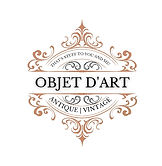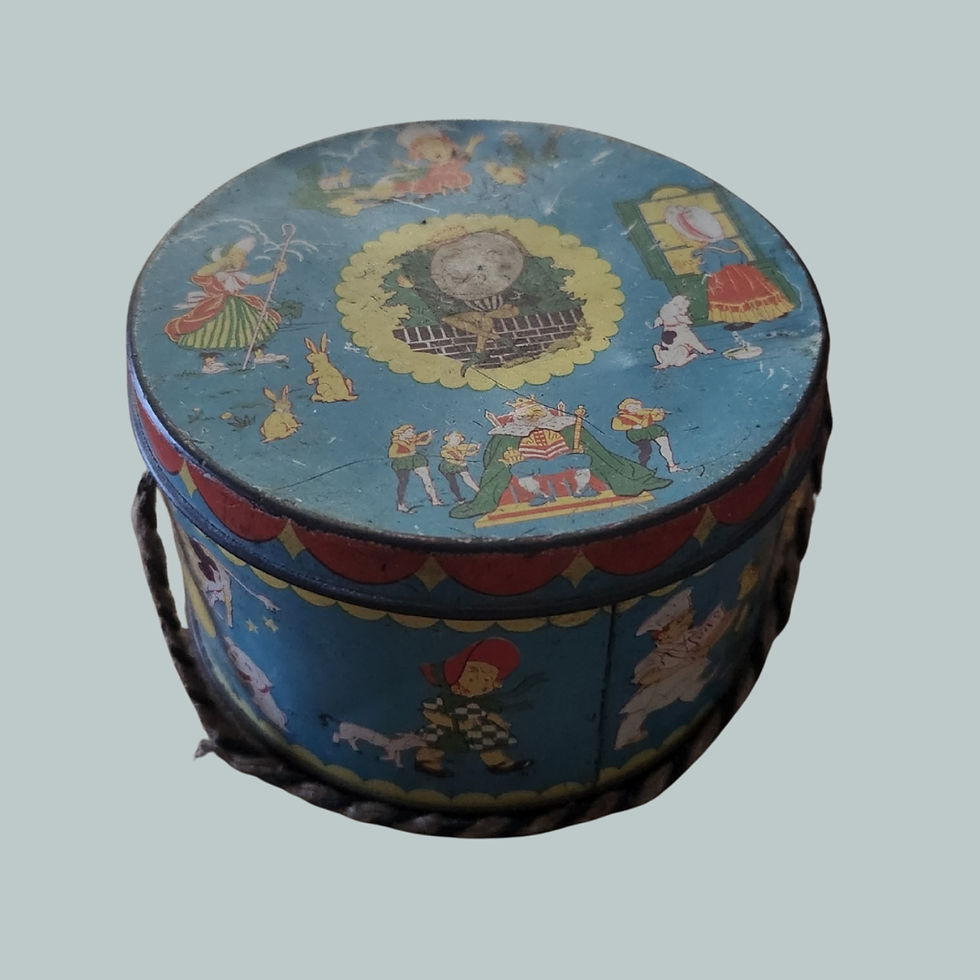Vintage brass and enamel small pin / decorative dish probably indian. This very decorative dish has the initials VLB on it. Probably indian. Some age related wear.
-
16 cm wide handle to handle
9 cm depth 2 cm height
-
Enameling, the process of fusing colored glass to metal of fusing colored glass to metal, has a rich history dating back to the 13th century BC, with evidence found in Cyprus. The technique evolved over time, with different cultures like ancient Egypt, Greece, Rome, and China developing their own enameling styles. Notable enamel techniques include cloisonné, champlevé, and plique-à-jour.
Early Origins and Evolution:
Ancient Times:
Enameling emerged in ancient civilizations like Egypt, where it was used on ceremonial objects, amulets, and jewelry. The Mycenaeans and Minoans also crafted intricate enamel pieces.
Mycenaean Period:
The earliest known enamelled objects were found in Cyprus during the Mycenaean period (13th century BC), specifically six gold rings.
Spread of the Technique:
Enameling spread to other regions, including Greece, Rome, and China, where it was incorporated into various art forms and decorative items.
Byzantine and Islamic Influences:
In Europe, the Byzantine style of enameling, particularly cloisonné, became influential, while Islamic art also contributed to the development of enamel techniques.
Medieval Period:
During the Middle Ages, enameling reached a peak of popularity, with the French city of Limoges becoming renowned for its champlevé enamelwork.
Renaissance and Later:
Enameling continued to be used in the Renaissance and later periods, with various techniques like champlevé, plique-à-jour, and painted enamel becoming popular.
Arts and Crafts Movement:
The Arts and Crafts movement in the late 19th and early 20th centuries saw a renewed interest in enameling, with artists using it as a means of artistic expression.
Techniques and Styles:
Cloisonné:
Involves creating compartments with thin metal wires, which are then filled with enamel powder and fired.
Champlevé:
Enamel is applied to metal surfaces that have been cut or engraved to form shallow recesses.
Plique-à-jour:
A transparent enamel technique where the enamel is applied to the surface of the metal, allowing the light to shine through.
Basse-taille:
A technique developed in the 13th and 14th centuries where the metal is carved into various levels of relief to create a three-dimensional effect.
Enamel in Different Cultures:
Ancient Egypt: Enameling was used to decorate ceremonial objects, amulets, and jewelry.
Greece: The Greeks used enamel inlays on sculptures.
Celts: The Celts also used enamel on metal objects, as seen in the Battersea Shield and the Staffordshire Moorlands Pan.
China: Cloisonné enamelwork was well-established in China during the 13th and 14th centuries.
Byzantium: Byzantine enameling, particularly cloisonné, was highly influential in Europe.
Modern Applications:
Enamelware: Enamelware, where enamel is fused to a metal base, is still used for cookware and decorative items.
Jewellery: Enameling continues to be used in jewelry, with various techniques and styles being employed.
Art: Artists continue to explore enamel as a medium for artistic expression.
Супутні товари
Additional Details
Product Information
The information provided by Objetdart-stuff ('we', 'us', or 'our') on http://www.objetdart-stuff.co.uk (the 'Site') and our mobile application is for general informational purposes only. All information on the Site and our mobile application is provided in good faith, however we make no representation or warranty of any kind, express or implied, regarding the accuracy, adequacy, validity, reliability, availability, or completeness of any information on the Site or our mobile application. UNDER NO CIRCUMSTANCE SHALL WE HAVE ANY LIABILITY TO YOU FOR ANY LOSS OR DAMAGE OF ANY KIND INCURRED AS A RESULT OF THE USE OF THE SITE OR OUR MOBILE APPLICATION OR RELIANCE ON ANY INFORMATION PROVIDED ON THE SITE AND OUR MOBILE APPLICATION. YOUR USE OF THE SITE AND OUR MOBILE APPLICATION AND YOUR RELIANCE ON ANY INFORMATION ON THE SITE AND OUR MOBILE APPLICATION IS SOLELY AT YOUR OWN RISK.
Postage and Returns
DELIVERED FROM OUR WAREHOUSE DIRECT TO YOUR DOOR
Shop with peace of mind knowing that:
-
Secure ways to pay include PayPal, to protect your money and your security
-
We use reliable couriers to deliver on time and safely, with insurance for loss or damage included. Royal Mail, EVRI, and DPD options
-
Tracking information is always provided once your item has dispatched so you can follow its journey
-
We use sustainable and repurposed packaging and delivery takes 3 to 5 days (UK)
-
We have a reliable, no quibbles, 14 days returns policy, just in case you simply change your mind
-
We are available via email or chat if you need help making the purchase or if you want to make us an offer
-
There's always discount available. Right now use our coupon code ODSAUTUMN25 for 15% off at checkout - only available on direct website purchases and for a limited period!

July 2025
Great item, was a glass jar with contents, well packaged, with a fragile label attached, arrived no problems. A near perfect example of a 50s/60s Hopkin and Williams chemical bottle. The postage was fair, the item was as described and a good value, especially with contents.
August 2025
Tres bonne transaction, envoi rapide et soigne. A refaire. Vendeur top professionnel
June 2025
I am absolutely delighted with this item. It arrived by post quicker than I expected. It was very well packaged up and I will add it to my ever growing collection..I spent quite a while deciding whether to add this [item] to it. it is exactly as you described.
































